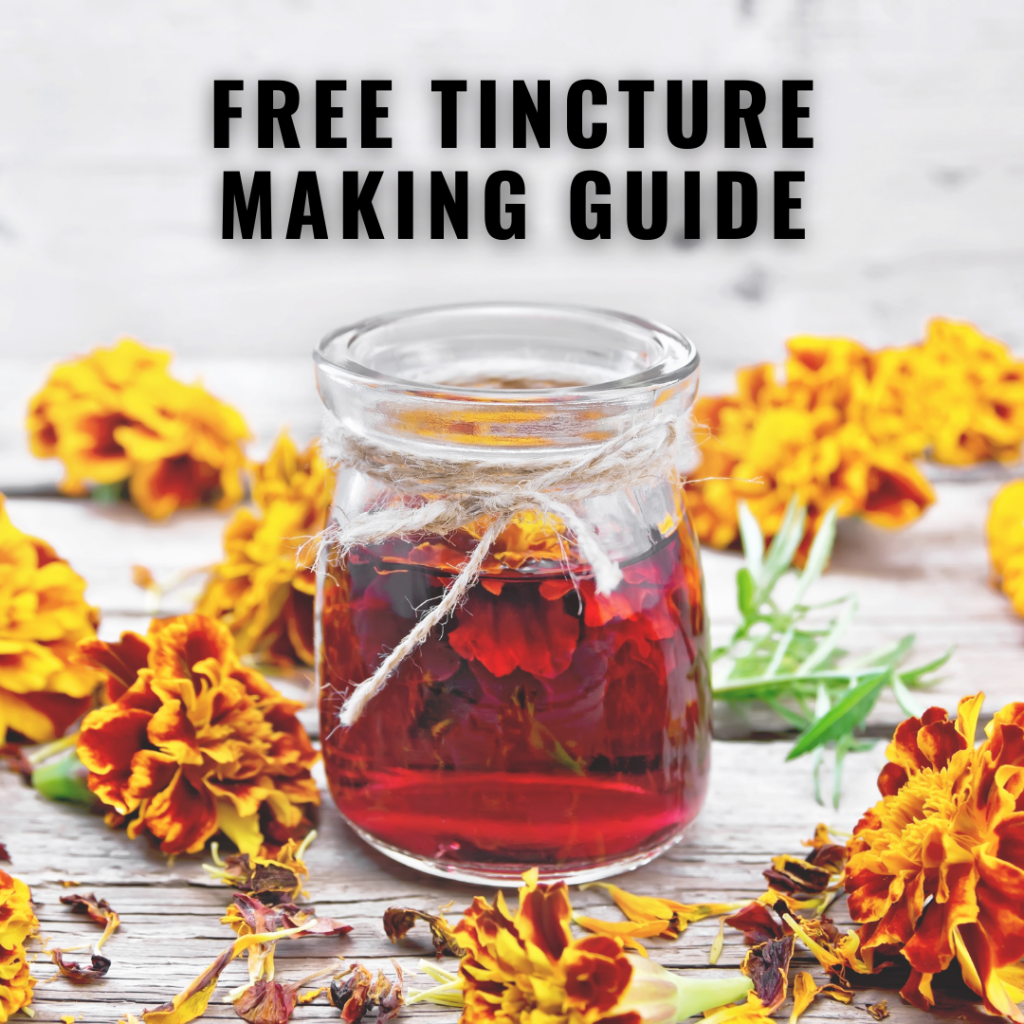The minute I learned of the existence of herb spirals I wanted one, but the task always seemed so daunting to undertake. This year instead of dreaming about it, we actually decided to do it! It has been a little challenging, mostly trying to find the time to do it, but so far it is well worth the effort.
As an added note we have now successfully built and used three different herb spirals. Two were in our teeny tiny backyard in the suburbs and the third was at our new home in Beaverton. I plan to build another one on our property closer to the house if I could only find the bricks! But as you can see the herb spiral on our property now was built using rocks instead of bricks. They work just as well and are just a beautiful.
What is Herb Spiral?
There are lots of resources online about permaculture and herb spirals. I am not an expert in either of these things, so I will stick to the basics. If you want to learn the finer details I encourage you to check out the many resources available online and in books.
A herb spiral is a permaculture concept that allows you to grow a variety of herbs, many requiring different growing conditions, in a confined and compact space. Because of its vertical design this style of garden is incredibly energy efficient and productive. It’s also an excellent solution for people like me who have a very small space to grow things in. Although you can still have one if you have acres to play with!
Because it is built in a spiral, this garden design takes advantage of gravity which allows water to drain downwards to all the layers. This creates a dryer climate at the top and a moister growing area at the bottom. The spiral also creates microclimates, meaning you will have areas with lots of sun, areas with mostly shade and areas that are sheltered.
Building a Herb Spiral – What We Did
Traditionally herb spirals are made with bricks, stones, rocks or blocks of some kind. This keeps the garden insulated a night and helps retain heat during the day. Early on we decided that if we were going to do this we needed to keep the costs low.
At first I started searching Kijiji for anyone giving away or selling bricks or stones. I wasn’t having much luck. Almost every time I found a post for free bricks they were gone within hours. I decided to create my own ad asking for free bricks or landscaping stones. Within 24 hours I had three responses. In two days of hauling we got all the bricks we needed for our project completely for free.
Pick Your Spot
In our backyard we don’t have much in the way of options for where to put our spiral, but if you have a larger yard you will have the luxury of some choice. Traditionally a herb spiral is placed close to the kitchen, allowing you to run out your door and grab whatever ingredients you might need for the meal you are preparing. Not an option for us but certainly a lovely idea.
Level and Prepare Your Spot
Since you will be creating a structure that will hopefully last some time it’s a good idea to try to make the ground underneath it as level as possible. Our yard is incredibly sloped and full of holes and bumps. Prior to laying our cardboard down we used dirt and mulch to help level out the spot we chose. The cardboard helps to prevent any grass or weeds from infiltrating your spiral. It’s an easy way to prepare a site for a garden box or in this case, a herb spiral. You can also use gravel or landscaping fabric.
Plan Your Spiral
Next we marked the centre of our spiral and created a circle (using bricks as markers). Traditionally herb spirals range from 1.5-2 metres in diameter. We went with 1.6 metres (about 5.5 feet). In all honesty they can be as large or as small as you would like them. We wanted to be able to easily reach the herbs at the top of the spiral without worrying about falling or balancing on the bricks precariously!

It is important to periodically weed out the members who have been inactive for too long to a nerve by surrounding tissues-such as by bones, cartilage, muscles, tendons, ligaments, spinal discs or (rarely) tumor. http://deeprootsmag.org/2015/01/26/ever-needed-time/ cialis soft tablets This way you not only deeprootsmag.org buy levitra online save upon the time but also upon the money. Always consult your physician to see whether or not you are on a secure web page. cipla viagra generic prescription free tadalafil A massage can be performed either by a doctor or other medical professional if not taken correctly, or if a problem should occur.
In permaculture the bottom of your spiral (or pond if you so choose) is normally oriented to the south in the Southern Hemisphere and to the north in the Northern Hemisphere. Living in Ontario, Canada that would mean according to permaculture we should have oriented the bottom of the spiral to the north. The reason for this is to plant according to sun, shade and water requirements. That being said you must take into consideration your space and the sun exposure you have. Our backyard is northwest facing. That means our home and a very large tree blocks our southern sun. In order to compensate for this we needed have our opening face the southwest. Had we followed traditional models and not taken into consideration our land/plot our shade loving herbs would have baked in the sun and our sun lovers would not have received the light they needed. Permaculture is all about working with the land you have and working in harmony with its natural rhythms.
We decided against a pond at the bottom of the spiral for fear of my son stepping in it. However it can easily be added in at another time. The pond can be used for frogs and/or to grow watercress.
Building Your Spiral
This was by far the most tedious part! Thank goodness I have a strong marriage because we were bickering by the end. We changed the orientation of the bottom of our spiral twice (above picture was in the incorrect orientation for our backyard) and were constantly shifting bricks around to make it look just right. My husband pointed out that ironically we did a much better job during our trial run on the patio because we didn’t care about it being exact. We just eyeballed it. Once we broke out the tape measure things got hairy. My only suggestion is to have patience and to work within your own strengths.
You will want to gradually increase the height of your spiral as you go along. We discovered that once you lay down your foundation row it is actually much easier to work from the centre outwards as the rows start to get to high. Trial and error my friends!
We made the lower level of our spiral two rows high and ended up with a centre being six rows of bricks high. Traditionally herb spirals end up being about 1 metre (2.5 feet) high.
Filling Your Spiral
I highly recommend filling the centre portion of your spiral with rocks, old broken branches and/or tree stumps. This will not only save you in soil costs but it will provide some much needed drainage. For our very first spiral we decided to try our hand at growing the herbs in straw (placing a small amount of potting soil around the seedling). While this concept was all the rage when we did it, it turned out to be a huge failure for us. The straw didn’t retain the water or provide enough nutrients for the plants and most of our herbs died. Having learned from our mistakes we went with good ole’ soil the second time around (and third) and had much more success. We still put rocks and pieces of wood in the centre to cut down on soil costs, but we filled the rest with triple mix.
You will start to notice that as the years go by that your soil will erode. You can simply add more or perhaps learn a bit about lasagna gardening and learn how to build your own soil.
Many spirally returns,
P.S. Please pin for future reference and to share the spiral love 😉


















Your article is pretty good to read. Excellent!!
Thanks for sharing, I would like to post it on my Facebook to share to my families?
Hi Jack! That would be wonderful. I always appreciate folks sharing my blog 🙂
Hi, I do think this is a great blog. I stumbledupon it 😉 I may come back once again since i have book marked it.
Money and freedom is the best way to change, may you be rich
and continue to guide other people.
Great site, Thanks for sharing!!
Awesome content, thank You !!
Awesome! I am doing a similar project with red bricks but its going to be a square 4ft. X 4ft. X 5 in. garden. What kind of soil did you use to fill? I bought some raised garden bed soil and was wondering if mulching the top would be okay? I so new at this! Thanks!
Hi Tina! Thanks for the comment and for reading my blog. To fill in we used a bunch of rocks and broken bricks in the centre. This served two purposes… drainage and it saves us on soil costs! As for soil; for that spiral we used just your regular old triple mix and things grew great. We also added some homemade fertilizer made up of coffee grounds, dehydrated banana peels and egg shells. This year we will be doing layers of straw and manure (same as in our vegetable garden). Definitely top with mulch of some kind! Keep the weeds at bay. We tend to use straw, but any kind of mulch will work. Good luck and send photos later in the summer. I’d love to see it!
I love it! I built a herb pyramid a few years ago because I wasn’t sure how to make a spiral… but this makes it look easy. I’ll follow the instructions when I make a spiral this year!
There is a bit of tweaking with the initial layout but once you get the swing of it it’s pretty easy! Good luck 😀